The oldest known reference to
Motobu Choki is quoted as saying: ‘The only Kata that was necessary for one to be a good fighter was Naihanchin’. This is because he believed that the
In Shotokan the name and Kata
Sosai Masutatsu Oyama learned the
The
 |
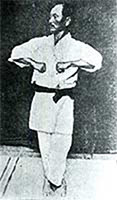 |
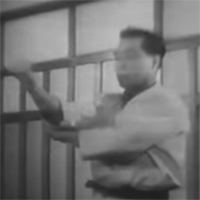 |
| Motobu Choki | Funakoshi Gichin | Masutatsu Oyama |
The most important purpose of
For proper Kata performance, obviously a strong horse stance is essential, but the student must also understand the difference between hip rotation and hip vibration. Often neglected but of great importance, head turns must be stressed in this Kata. Another distinct characteristic of the Kata is the technique where the circular movement of the arms protects the head in a block, while simultaneously setting up the opening for the
The punching and blocking motions are short because space is very restricted. The short techniques make
When undertaking research into any aspect of the Martial Arts it is difficult not to get drawn in to the dubious world of secret masters with secret teachings known only to the master’s personal student. Inevitably with any long standing tradition, ritual, or any body of knowledge that has to pass through many hands and numerous generations, not only are things added, but they are also lost. We have to accept that the
Naifanchin Shodan
video
instructions
The footwork is accomplished in a sideways manner using the crossing step, or
| # | Naifanchin Shodan (Nidan, Sandan) | Black Belt |
|---|---|---|
| Begin the On the command At the command This is the traditional opening of the Okinawan (Tomari-te) and Shotokan version. |
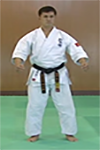
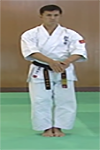
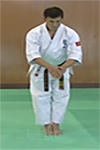 |
|
| 1. | On the command |
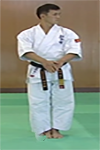
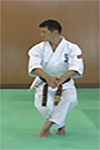 |
| 2. | Put the left heel on the ground, then take a big step into |
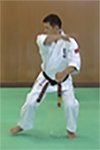
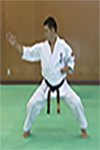 |
| 3. | In the same position, still in |
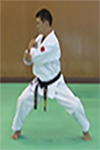 |
| 4. | In the same position make a right |
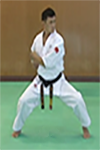 |
| 5. | In the same position block with a left |
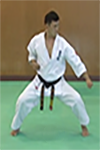 |
| 6. | In the same position strike a right |
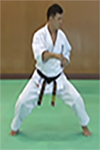 |
| 7. | Move to the left, with the right foot cross in front of the left into |
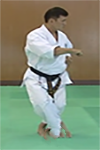 |
| 8. | Put the right heel on the ground, then lift the left knee high and hit left with a left |

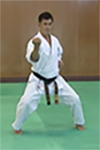 |
| 9. | Stil in position, |
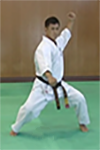 |
| Immediately chained with a direct left |
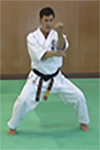 |
|
| 11. | Turn the head to the left. |
 |
| 12. | Make a left |
 |
| 13. | The |
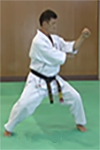 |
| 14. | Turn the head to the right. |
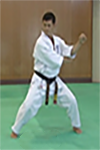 |
| 15. | Make a right |
 |
| 16. | The |
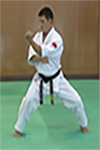 |
| 17. | In the same position make a right |
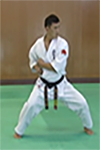 |
| Strike a |
 |
|
| 19. | With the left hand make a big cirkel-movement that end into |
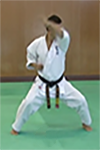
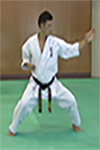 |
| 20. | In the same position strike a right |
 |
| 21. | In the same position make a left |
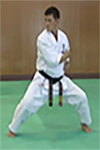 |
| 22. | In the same position block with a right |
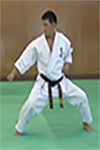 |
| 23. | In the same position strike a left |
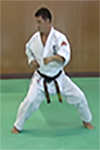 |
| 24. | Move to the right, with the left foot cross in front of the right into |
 |
| 25. | Put the left heel on the ground, then lift the right knee high and hit with a right |
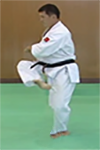
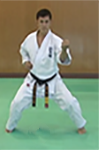 |
| 26. | Still in position, |
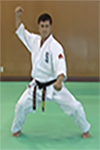 |
| Immediately chained with a direct right |
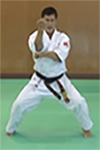 |
|
| 28. | Turn the head to the right. |
 |
| 29. | Make a right |
 |
| 30. | The |
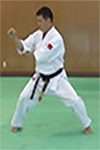 |
| 31. | Turn the head to the left. |
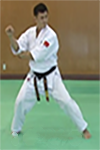 |
| 32. | Make a left |
 |
| 33. | The |
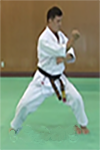 |
| 34. | In the same position make a left |
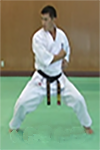 |
| Strike a |
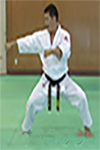 |
|
| 36. | Move the right foot back into |
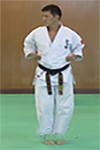
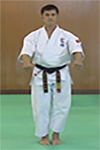 |
| The At the command Back to Top |
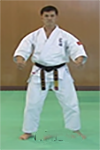
|
Naifanchin Shodan
source Youtube
Documentation
Kihon Waza
Dachi Waza
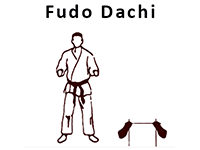 Fudo Dachi
Fudo Dachi
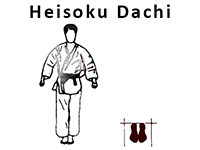 Heisoku Dachi
Heisoku Dachi
Mae Kosa Dachi
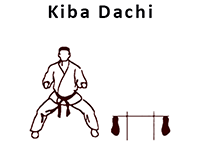 Kiba Dachi
Kiba Dachi
Te Waza
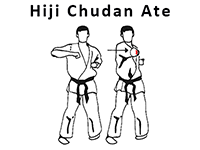 Chudan Hiji Ate
Chudan Hiji Ate
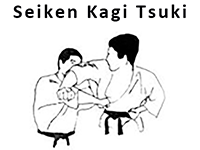 Chudan Kagi Tsuki
Chudan Kagi Tsuki
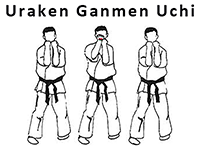 Uraken Ganmen Uchi
Uraken Ganmen Uchi
Morote Tsuki
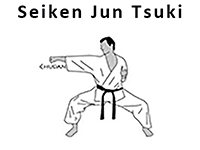 Jun Tsuki
Jun Tsuki
Uke Waza
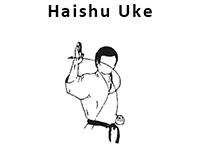 Haishu Uke
Haishu Uke
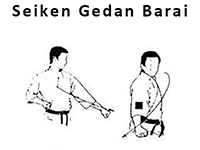 Gedan Barai
Gedan Barai
Chudan Ura Seiken Uchi Ude Uke
Chudan Soto Ude Uke
Nagashi Uke
Geri Waza
Fumikomi
Kihon Jutsugo
Kamae - 構え, means posture or base. Kamae is to be differentiated from the word Dachi - 立ち. Dachi refers to the position of the body from the waist down, Kamae refers to the posture of the entire body, as well as encompassing one's mental readiness.Kamae
Musubi Dachi Kamae (Ura Te)
Rei.Rei
Hajime - 始め, means begin.Hajime
Koshi no Kamae.Koshi no Kamae
Hikite - 引き手 means drawing hand: Hiku - 引き, to draw or pull, and Te - 手, the hand.Hikite
Tettsui.Tettsui
Nami Gaeshi.Nami Gaeshi
Naore - 直れ, is a command to go back into the beginning Kamae.Naore
Yasumi - 休み, is a command to rest or relax.Yasume
Naifanchin Nidan
video
instructions
To accomplish this, the student is introduced to many new techniques such as
| # | Naifanchin Nidan (Shodan, Sandan) | Black Belt |
|---|---|---|
| Begin the At the command |
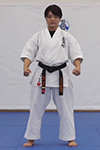
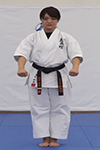 |
|
| 1. | On the command |
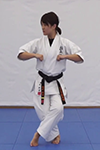 |
| 2. | Move to the right into |
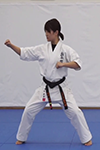 |
| 3. | Move to the right into left |
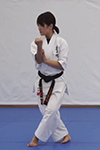 |
| 4. | Move to the right into |
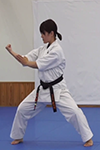 |
| 5. | Move to the right into |
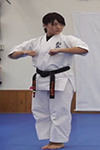 |
| 6. | Move to the left into |
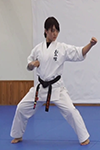 |
| 7. | Move to the left into right |
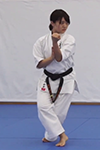 |
| 8. | Move to the left into |
 |
| 9. | In the same |
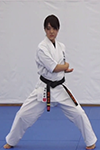 |
| 10. | In the same |
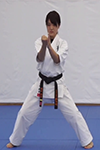 |
| 11. | In the same position pull back your right fist in the ready punch position and the open left |
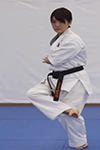
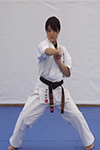 |
| 12. | Still in the same position make a right |
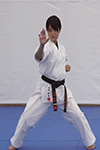 |
| 13. | Move to the right into left |
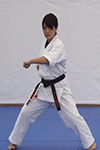 |
| In the same |
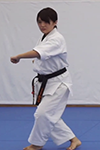 |
|
| 15. | In the same |
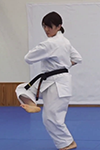 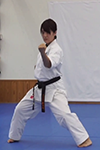 |
| 16. | In the same |
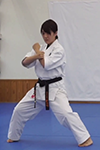 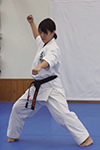 |
| 17. | In the same position pull back your left fist in the ready punch position and the open right |
 |
| 18. | Still in the same position make a left |
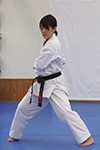 |
| 19. | Move to the left into right |
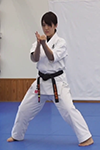 |
| In the same |
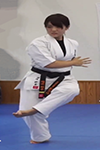
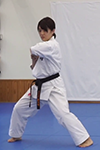
|
|
| 21. | In the same |
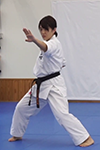
|
| 22. | In the same |
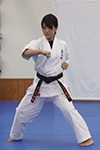
|
| 23. | In the same |

|
| 24. | In the same |
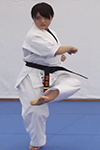
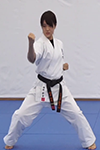
|
| 25. | In the same |
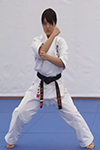

|
| 26. | In the same |
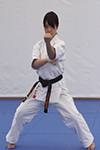
|
| 27. | The Kata is completed after the command |
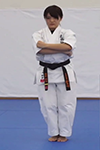
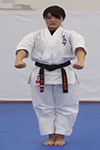
|
| The Kata is completed after the command Back to Top |

|
Video
source Youtube
Documentation
Kihon Waza
Dachi Waza
 Fudo Dachi
Fudo Dachi
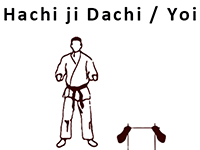 Joi Dachi
Joi Dachi
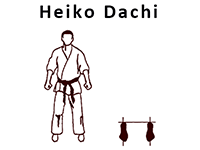 Heiko Dachi
Heiko Dachi
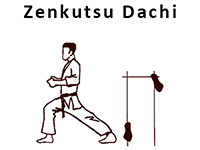 Zenkutsu Dachi
Zenkutsu Dachi
Te Waza
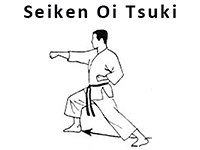 Jodan Oi Tsuki
Jodan Oi Tsuki
Uke Waza
 Gedan Barai
Gedan Barai
Geri Waza
Kihon Jutsugo
Kamae - 構え, means posture or base. Kamae is to be differentiated from the word Dachi - 立ち. Dachi refers to the position of the body from the waist down, Kamae refers to the posture of the entire body, as well as encompassing one's mental readiness.Kamae
Hajime - 始め, means begin.Hajime
Hikite - 引き手 means drawing hand: Hiku - 引き, to draw or pull, and Te - 手, the hand.Hikite
Naore - 直れ, is a command to go back into the beginning Kamae.Naore
Yasumi - 休み, is a command to rest or relax.Yasume
Naifanchin Sandan
video
instructionsThe last Naifanchin Kata,
| # | Naifanchin Sandan (Shodan, Nidan) | Black Belt |
|---|---|---|
| Begin the At the command |
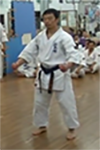
 |
|
| 1. | On the command |
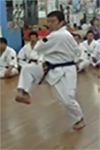
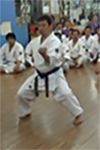 |
| 2. | Move to the right into |
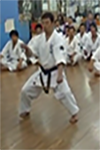 |
| 3. | Move to the right into left |
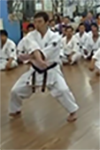
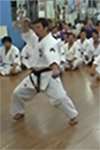
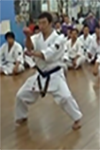 |
| 4. | Move to the right into |
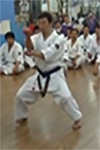

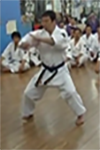
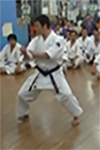 |
| 5. | Move to the right into |
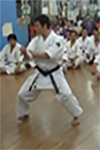
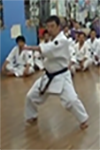
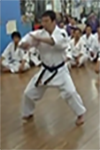
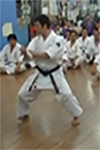 |
| 6. | Move to the left into |
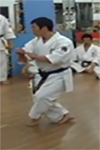
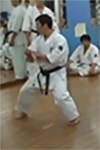
 |
| 7. | Move to the left into right |
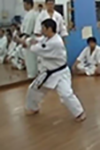
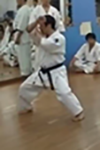
 |
| 8. | Move to the left into |
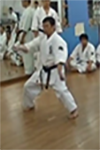
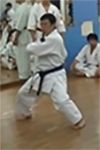
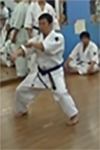 |
| 9. | In the same |

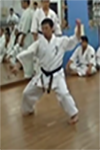
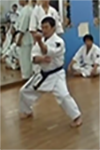
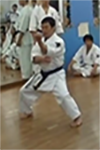 |
| 10. | In the same |
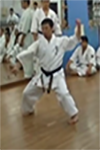
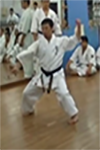
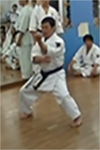
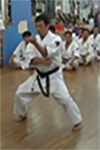 |
| 11. | In the same position pull back your right fist in the ready punch position and the open left |
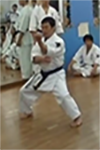
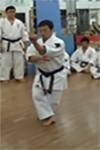
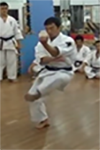
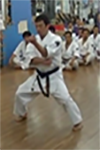 |
| 12. | Still in the same position make a right |
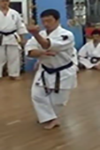
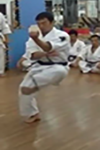
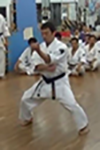 |
| 13. | Move to the right into left |
 |
| In the same |
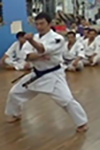 |
|
| 15. | In the same |

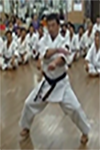
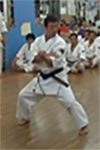 |
| 16. | In the same |
 |
| 17. | In the same position pull back your left fist in the ready punch position and the open right |
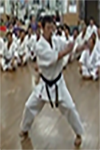
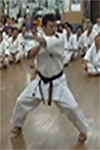
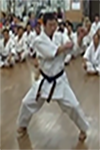 |
| 18. | Still in the same position make a left |
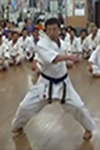
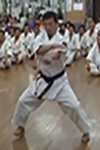 |
| 19. | Move to the left into right |
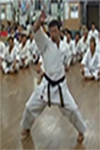
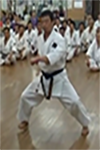 |
| In the same |
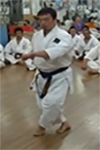
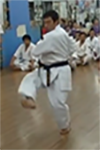
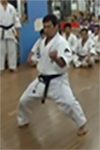
|
|
| 21. | In the same |
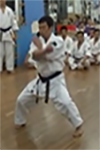
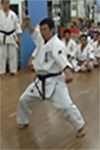
|
| 22. | In the same |
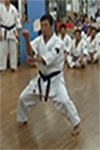
|
| 23. | The Kata is completed after the command Back to Top |
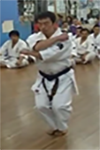
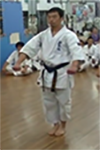
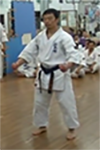
|